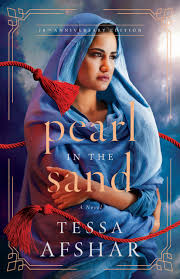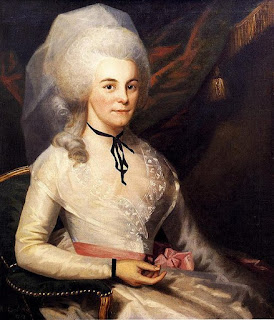The story of Rahab is one of my favorites in the Bible. Rahab was a clever and wise woman who devised an escape plan for her and her family. As the stories of the Israelites traveled to Jericho and whispered among its citizens, she heard about the amazing things the Israelite God could do. She decided that she would put her faith in this God she didn’t know in an amazing act of faith. Her decision would mean her death if she was find out but she still took the risk. Although she was a prostitute and an idolater and would see her city and her people destroyed, her act of faith would be rewarded as God gave her a new life among his people and a place in the ancestry of his Son. What was her story? Why would she take such a risk? What does her story tell us about fear and God?
Jericho may be one of the world’s oldest cities as its ancient ruins can be found approximately 17 miles northeast of Jerusalem. The walled city was the gateway to Canaan, the final obstacle for the Israelites to overcome to claim their promised land. Rahab’s home was inside the thick surrounding walls. She would entertain the visitors to the city as well as many of the locals. This is how she heard the strong and marvelous stories of the God of the Israelites including the parting of the Red Sea (Exodus 14:15-28) and the victory against Sihon and Og (Numbers 21:21-36). When the spies that Joshua sent into Jericho made their way to Rahab’s house, she hid them on the roof under stalks of flax which were out drying. When the king asked Rahab about the two men, she claimed not to know who they were or where they were from. She tells the king they left at dusk and men were sent out in pursuit. When it was safe, Rahab tells the men a warning and asks them for their assurances that she and her family would be spared (Joshua 2:12-13). They agreed and tells her to hang a scarlet cord out her window and her family would be spared. Rahab watched from her window the gathering army, their strange walking around the city, the final thunderous cry, and the crumbling of city’s walls (Joshua 6:12-20). Rahab and her family were spared and joined the Israelites into the promised land.
The significance of the red cord cannot be overlooked. Scarlet has become synonymous with salvation and redemption. In similar fashion of the lamb’s blood on the doorframes of the Israelites, the red cord spared Rahab and her family from the coming siege (One for Israel, 2018). While the Messiah was promised to the Israelites, the scarlet cord in Rahab’s story is a connection that the promised Messiah was coming for the Gentiles as well. The scarlet cord is a fore of how redemption will come to faithful Gentiles (Jews for Jesus, 2001). Rahab’s faith was rewarded with the honor of being the great grandmother of King David and an ancestor in the genealogy of Jesus (Matthew 1:5) and one of only two women mentioned in the Hall of Fame in Hebrews 11. Rahab’s redemption is also an example of how God’s grace no boundaries. Anyone who comes to him with faith will be saved. It would seem strange that God would choose to save Rahab, a prostitute, however; God saw her heart, not her profession. God often chooses many people of various backgrounds, especially those who are on the lowest rung of the societal ladder. No one is beyond his influence or his grace. The scarlet cord saved Rahab and her family just as the blood of Jesus saves those who believe in him. Rahab’s story is just another example of God’s willingness to use the less than perfect, the outcasts, anyone who society may see as unsuitable to accomplish his holy purposes
Fear and feelings of failure will often keep us from moving forward in our faith. While she was afraid, as she heard the stories of God, she rose above her situation with faith and trust. Her faith gave her the courage to risk her life. She knew it was certain death if the king of Jericho found out she lied. It would also certain death if she turned the spies in. She would have been destroyed along with the city. In the face of certain death, Rahab placed her faith and trust in the Israelite God who had accomplished the unbelievable. She was resourceful and willing to help others at great cost to herself. Despite her profession, she is remembered for her faith. Rahab is an example of how not to let feat affect your faith in God’s ability to deliver. One of my favorite quotes from Tessa Afshar’s Pearl in the Sand is “It’s time to leave fear behind or you’ll be robbed of your destiny. You don’t need confidence in yourselves or in your own power. Be strong in the Lord. When disaster seems close, don’t be discouraged. God will never leave you.” Acting on faith is like the saying, which has many forms but generally says, that courage is being afraid and going forward anyway. That’s what Rahab did. She put her faith over her fear. If we can find the strength to put our faith over our fear, what wonders could God do in our lives?
In conclusion, Rahab was a woman of great faith in a God she didn’t know. She heard the stories and believed that the Israelite God was more powerful than the idol gods her city worshipped. Her story is another example of who God doesn’t wait for us to be spotless or matured faith. He takes the ordinary, the willing and accomplishes the extraordinary both in their lives and the lives around them. There is a saying that goes around that says roughly that God doesn’t call the qualified, he qualifies the called. Rahab didn’t set out to be important or honored or rewarded. She simply wanted to survive. God saw her heart and saw a woman of great faith. He honored her in many ways. Her story matters as our stories matter today. Rahab’s simple decision to help the spies made a huge difference. What simple decision in our lives could make the difference?
Jews for Jesus (October 1, 2001). The Scarlet Cord of
Redemption. Jews for Jesus. www.jewsforjesus.org/publications/newsletter/newsletter-oct-2001/the-scarlet-cord-of-redemption.
Retrieved December 19, 2020.
One for Israel (June 10, 2018). The Secrets Of Rahab’s Rope.
One for Israel. www.oneforisrael.org/israel/jericho-rahab-and-the-rope-of-hope/.
Retrieved December 19, 2020.
For Further Reading
Pearl in the Sand by Tessa Afshar, a fictional
account of Rahab’s life including the events of Jericho and her life after
marrying Salmon and becoming an ancestor of Jesus.
Jesus (Yeshua) is a Worm…and a Snake too Among Other
Things by Kendall T. Shoulders, an analysis of often overlooked metaphors
and symbols which point to the coming Messiah in the Bible.
both books are
available in paperback and eBook













































